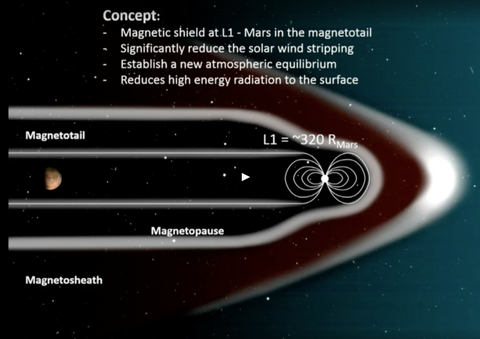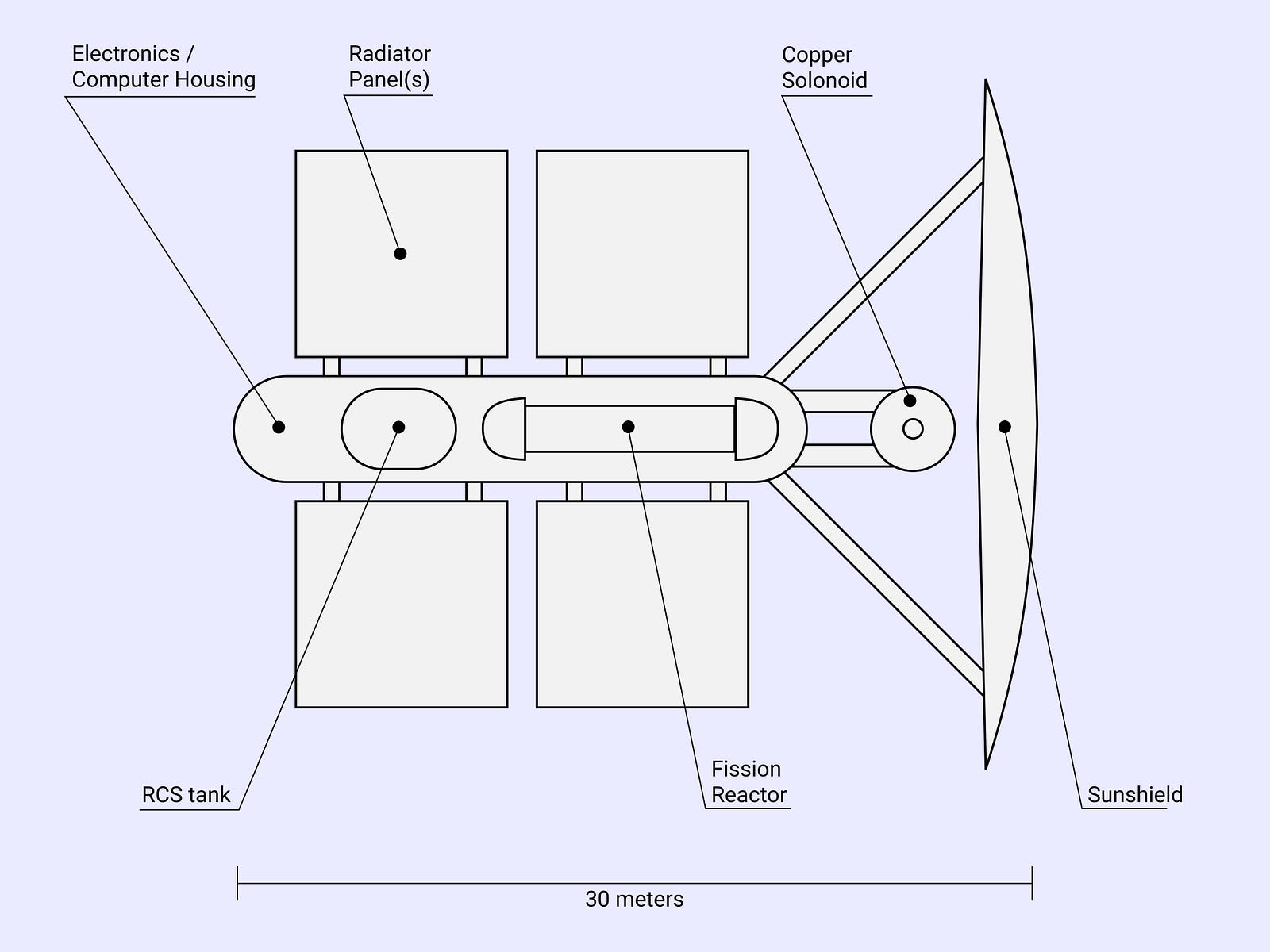Salvador
RF's Swedenborgian
Parts of the heavens are indeed there for us humans to transform into biospheres sustaining human life. Mars is likely the first place beyond Earth in our solar system to get a man-made biosphere that is an appreciable fraction in size comparable to Earth's biosphere.

The first step towards the terraforming of Mars is the deployment of a magnetic shield that protects Mars against the solar wind stripping of its atmosphere. This magnetic shielding would subsequently allow the planet's atmosphere to reacquire its former density that'd be high enough to allow for sustainable surface liquid water.

Reference: https://phys.org/news/2017-03-nasa-magne...phere.html
An effective artificial magnetosphere placed at Langrangian point 1 from Mars is very achievable with foreseeable technology. This magnetic shielding apparatus could weigh less than a few hundred tonnes which is within the load capacity of a big Falcon 9 rocket. I'm guessing the cost of protecting the Martian atmosphere with an artificial magnetosphere would probably be similar to the cost of a small nuclear reactor.

Some few billion tonnes of sulfur hexafluoride gas (SF6) could increase Martian atmospheric surface temperatures by over 20 degrees Celsius. Sulfur hexafluoride - Simple English Wikipedia, the free encyclopedia
The SpaceX interplanetary transport system could deliver this super greenhouse gas to Mars at a cost of less than $2,000/kg.
https://en.wikipedia.org/wiki/SpaceX_Mar...astructure
A few hundred thousand tonnes of SF6 delivered annually to Mars would cost just approximately $1/2 trillion yearly. This is less than a fraction of a percent of the global economic output value. An accumulation of a few billion tonnes of SF6 at an annual rate of a few hundred thousand tonnes would take less than ten thousand years. The annual cost of less than $100 per person per year on Earth would be totally worth transforming Mars into a world with triple its current atmospheric pressure and a warmer Mars with average surface temperatures greater than typical summer Antarctic temperatures.
Do you think this terraforming of Mars could be done at an affordable cost of approximately $500 billion annually over the duration of a few millenniums?

The first step towards the terraforming of Mars is the deployment of a magnetic shield that protects Mars against the solar wind stripping of its atmosphere. This magnetic shielding would subsequently allow the planet's atmosphere to reacquire its former density that'd be high enough to allow for sustainable surface liquid water.

Reference: https://phys.org/news/2017-03-nasa-magne...phere.html
An effective artificial magnetosphere placed at Langrangian point 1 from Mars is very achievable with foreseeable technology. This magnetic shielding apparatus could weigh less than a few hundred tonnes which is within the load capacity of a big Falcon 9 rocket. I'm guessing the cost of protecting the Martian atmosphere with an artificial magnetosphere would probably be similar to the cost of a small nuclear reactor.

Some few billion tonnes of sulfur hexafluoride gas (SF6) could increase Martian atmospheric surface temperatures by over 20 degrees Celsius. Sulfur hexafluoride - Simple English Wikipedia, the free encyclopedia
The SpaceX interplanetary transport system could deliver this super greenhouse gas to Mars at a cost of less than $2,000/kg.
https://en.wikipedia.org/wiki/SpaceX_Mar...astructure
A few hundred thousand tonnes of SF6 delivered annually to Mars would cost just approximately $1/2 trillion yearly. This is less than a fraction of a percent of the global economic output value. An accumulation of a few billion tonnes of SF6 at an annual rate of a few hundred thousand tonnes would take less than ten thousand years. The annual cost of less than $100 per person per year on Earth would be totally worth transforming Mars into a world with triple its current atmospheric pressure and a warmer Mars with average surface temperatures greater than typical summer Antarctic temperatures.
Do you think this terraforming of Mars could be done at an affordable cost of approximately $500 billion annually over the duration of a few millenniums?
